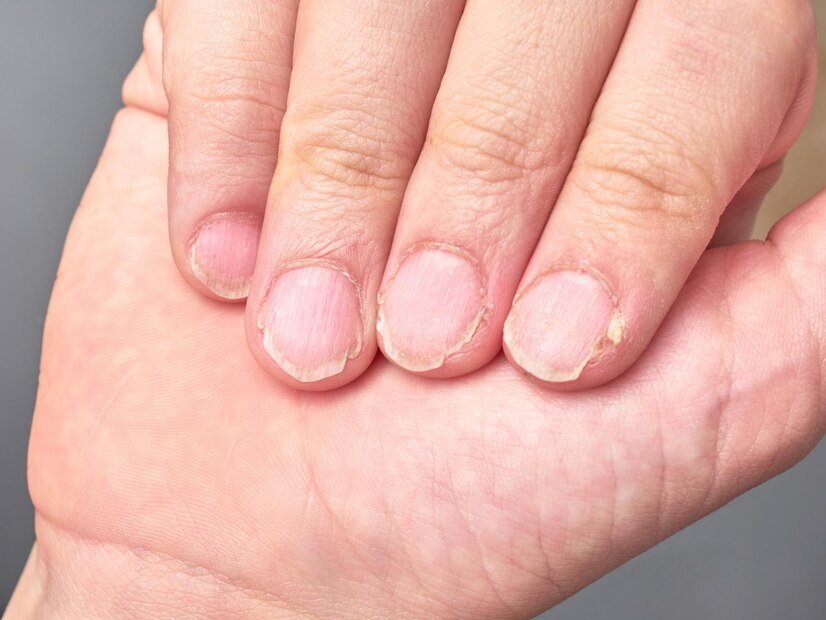Fungal nail infection is a common infection of the nail and the skin. It starts out as a white or yellowish spot under the tip of a toenail or fingernail. However, as the fungal infection goes deeper, the color of the nail may change even more, and become thick and flaky at the edges.
Toenails are more frequently affected than the fingernails. The medical term for a fungal nail infection is onychomycosis.
WHAT CAUSES FUNGUS IN NAILS?
- Keeping your feet wet and unclean most of the time
- Wearing shoes that cause your feet to get hot and sweaty
- Walking barefoot in public places where there is a chance of infection
- Have damaged nails
- Weak immune system
- Other health conditions such as diabetes, psoriasis or peripheral arterial disease
SYMPTOMS OF A FUNGAL NAIL INFECTION
As the infection spreads, more symptoms can be seen, such as:
Discoloration of the nail
Your nails may become white, yellow, brown or green
Thickening and disfigurement of the nail
The nail may become thicker and have an unusual texture. It might also adopt an abnormal unusual shape that may be difficult to trim.
Pain or discomfort in the nail
this happens when putting pressure or using the affecting toe or finger particularly when using or placing pressure on the affected toe or finger
Fragile or flaky nails
Pieces of the nail may break or it may completely come off
Due to the fungus, the surrounding skin may also become affected such as
- Itchy
- Cracked
- Red
- Swollen
TREATMENT FOR FUNGAL NAIL INFECTION
If you have a mild case of fungal nail infection, then you may not necessarily need treatment. However, if it is bothering you – both physically and causing discomfort and pain, then you may get it checked by a dermatologist or a general physician and they recommend you with medications and nail care tips accordingly.
If you have a severe case of fungal nail infection, antifungal medication may be prescribed.


